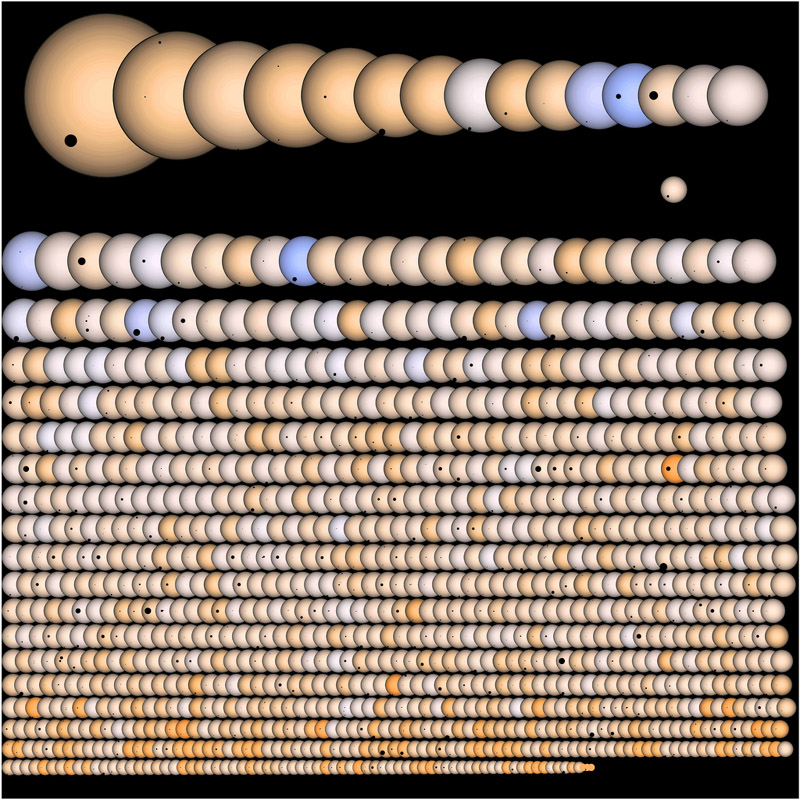First off I am going to make a recommendation. If you like all this cool space stuff and you like seeing a cool new space picture every day make Astronomy Picture of the Day (APOD) one of your bookmarks. Not only does it have a cool new image every day it generally gives a little bit of the history and science behind the picture.
Today's picture was quite a surprise especially for an aspiring planetary scientist like myself.
The above image is a comparison of a number of the stars that Kepler found possible planets around. Each disc is of course a star while the little black dots are the approximate size of the planets found around each star. That smaller disc slightly below the right side of the first row is our sun with the black dot representing Jupiter though if you want to go and see the image on the APOD site, you can see a very small dot representing Earth, its very cool.
The remarkable insight gained from this picture is the shear number of planets that have been found. these of course are mostly the larger planets, smaller ones may be hiding in their systems and would be too small to detect with our current level of technology. Also remember that this is just a small sample size in comparison to our own galaxy; there are many more stars with planets around them in our grasp. Who knows, one of these little black dots may hold life, its a distinct possibility.
Even as our own planet loses its uniqueness in the universe, the universe itself, of which we are a distinct part, grows grater and greater with every passing moment.
May the stars shine brightly in your skies!


I really like this image--very fun form of science communication.
ReplyDeleteYour video is covering up some of your text, so you may need to add in some spaces to your text to make it so we can see both.